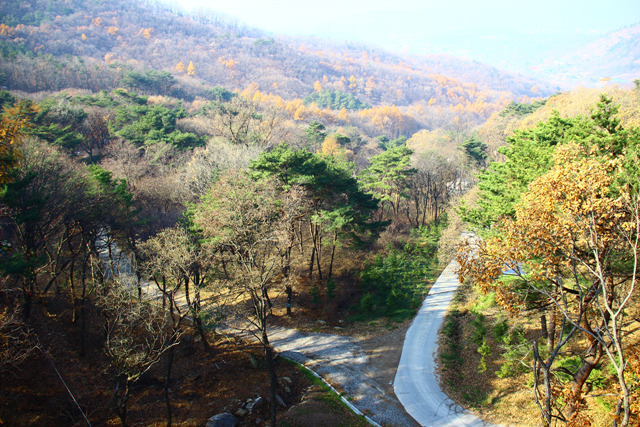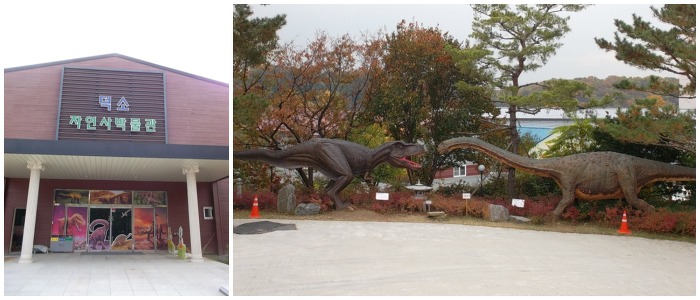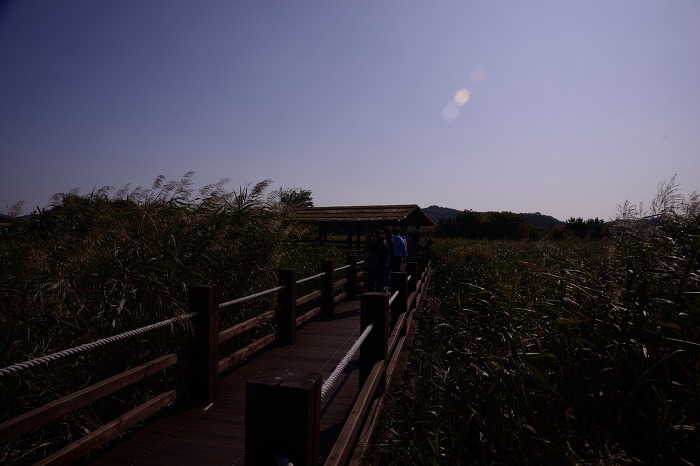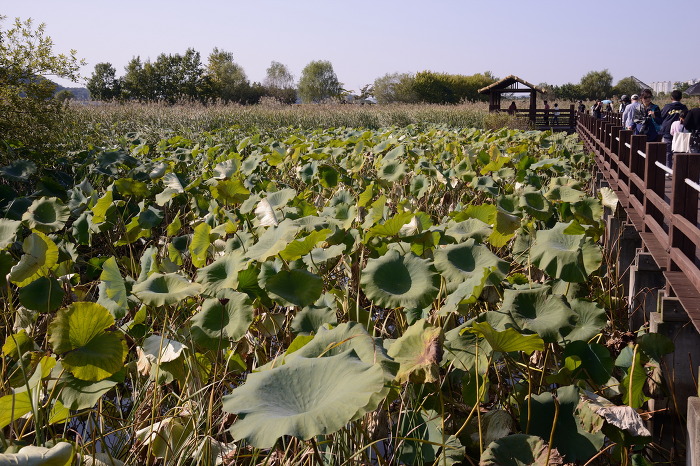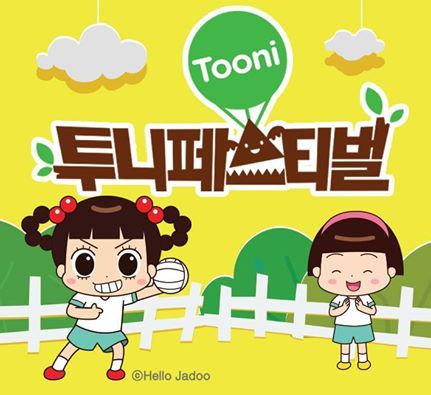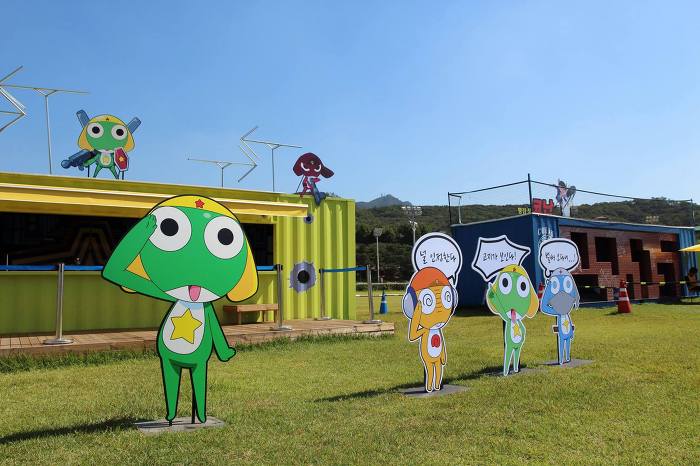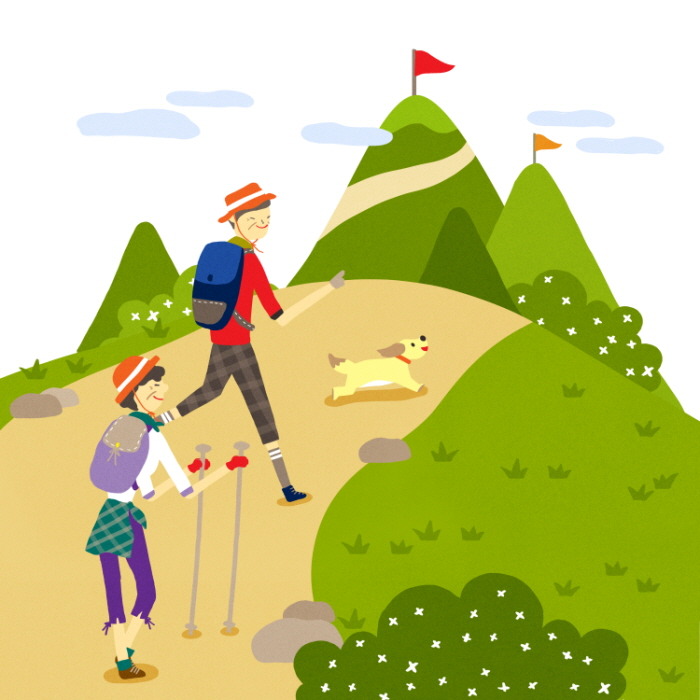
On September 13, the Pyeonghwa Nuri-gil Walking Festival was held with the goal of promoting use of Pyeonghwa Nuri-gil and developing tourism programs. Approximately 700 people including families, friends, coworkers and club members participated in the walking festival, and walked the 7 kilometer course — starting from the Imjingak Pavilion, passing over the Unification Bridge, and ending at the Jangsan Observatory — while enjoying the splendors of nature.
Walking Festival Dates
Location
Registration Period
2014, Sept 13 (Sat) 09:00~13:00
Paju Pyeonghwa Nuri-gil Course #8 Bangujeong-gil (7km)
Aug 14~
Sept 27 (Sat) 09:00~16:00
Yeoncheon Pyeonghwa Nuri-gil Course #11 Imjinjeokbyeok-gil (8km/ 14km)
Aug 24~
Oct 11 (Sat) 09:00~13:00
Gimpo Pyeonghwa Nuri-gil Course #1 Yeomhagangcheolchaek-gil (7km)
Sept 15~
The Pyeonghwa Nuri-gil Walking Festival, started on September 13, continues in Yeoncheon on September 27 and in Gimpo City on October 11. The entry fee is KRW 10,000, and event souvenirs will be offered to participants by Treksta. The official website accepts registrations on a first-come, first-served basis, so please act quickly.

Opened on May 8, 2010, Pyeonghwa Nuri-gil is the northernmost road in Korea; it connects Gimpo, Goyang, Paju and Yeoncheon, the four cities and counties of the DMZ border area. The 189 kilometer-long road is comprised of a total of 12 courses: 3 courses in Gimpo, 2 courses in Goyang, 4 courses in Paju, and 3 courses in Yeoncheon. Each course is around 15 kilometers long and takes approximately 4 to 5 hours on foot.

The 7 kilometer-long course this time starts from the Imjingak Pavilion and ends at the Jangsan Observatory, passing over the southern part of the Unification Bridge. A shuttle bus was provided to return participants to the Imjingak Pavilion from the Jangsan Observatory. Since it is not a long course and mainly level, people of all ages ranging from children to the elderly were seen at the festival. Just one drawback was that many sections lack trees, and the sun was quite strong that day.

The day featured a walking festival with music. A folk song festival was scheduled from 4:00pm at the Imjingak Pavilion, so many participants stayed after walking to enjoy the music. A brief music performance was also staged just before the Pyeonghwa Nuri-gil Walking Festival.


Beautiful songs by Travel Sketch, perfect for the autumn, filled the air of the Imjingak Pavilion. Travel Sketch performed a total of three songs and participated in the walking event. They also hit the stage of the folk song festival later that day.

After Travel Sketch’s performance, the mayor of Paju delivered a congratulatory address. Then came the distribution of participant numbers! I had waited in line since early as I wanted to wear the number 1. Unfortunately, it was not on a first-come, first-served basis; numbers had already been assigned to participants. Many people who applied individually or in groups as well as the staff participated in the walking event.


We did some warm-up exercises before beginning even though the walking course is not long. The Paju sports-for-all team helped us with the warm-up exercises. All participants, even Chinese tourists who were visiting the Imjingak Pavilion, followed the warm-up exercises.
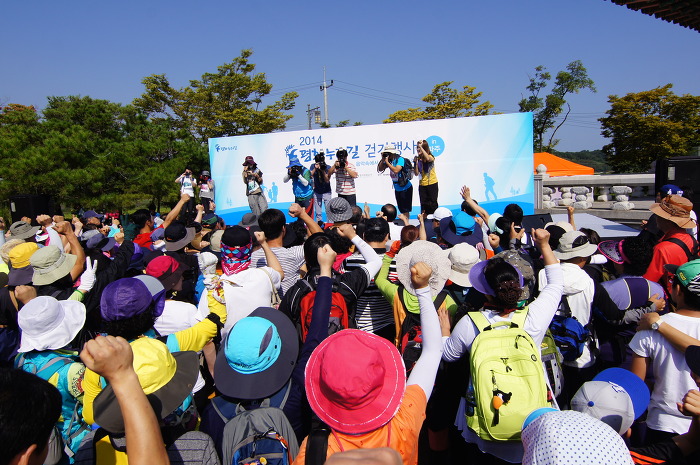
Let’s go after taking a commemorative photo!
Pyeonghwa Nuri-gil, which was established in 2010, started to gain popularity this year. For some parts of the road, whose surrounding areas have long preserved their natural states since the division of Korea, participants are required to carry identification so as to enter restricted areas. Since today’s walking course includes mostly restricted areas, advance application and valid identification were required to participate. For today’s walking event, only 700 applicants were accepted on a first-come, first-served basis.


As there are quite a few restricted areas, the event would have been impossible without the help of the military. Soldiers were stationed throughout the restricted areas, and the walking event had to be completed within a set time. So there was no time to spare to take a rest on the busking stage or to enjoy the nice views.

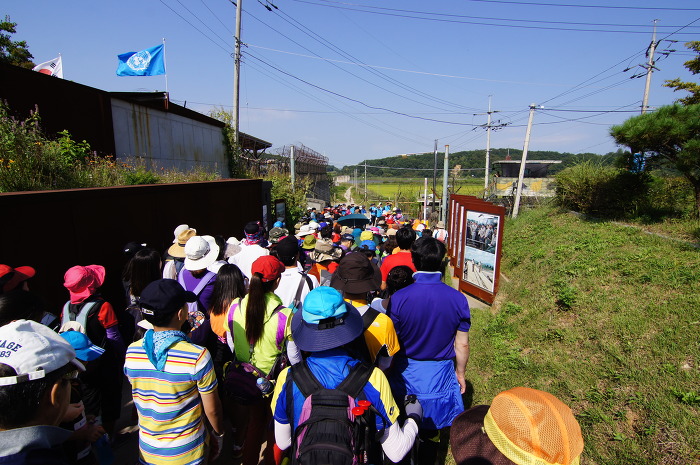
Pyeonghwa Nuri-gil consists of roads in small villages, paddy paths, roads along banks and more, passing through historic sites such as coastal areas with barbed-wire barriers, the Hangang River downstream and the Imjingang River. Pyeonghwa Nuri-gil is not only a space that evokes nostalgia in our minds, but also an ideal site for children to learn about and experience Korean culture, history and the nature.


Wishing for the happiness of all, I tied a ribbon to the fence. All of the 700 orange ribbons were waving in the wind. We all want peace, and the stillness of this place may impart a feeling of peace. True peace, however, does not seem to be with us yet.


Snacks and drinks were offered near Chopyeongdo. There was little shade, so we had to eat in the hot sun, but they still tasted wonderful. Chopyeongdo is an island in the middle of the Imjingang River. Since it has been rarely visited by human beings over the past 60 years, the island is a paradise for birds and animals inhabiting the Imjingang River.

In one corner, Flama was singing. Flama in Spanish means flame. The awesome singing group blends a repertoire from samba to bosse nova. Their music and voices were so good that I completely forgot the hot sun and the tiredness from walking, and I stayed there for a while indulging in their songs.

Pyeonghwa Nuri-gil includes areas where traces of the Korean War can be found, such as the 3rd Tunnel of Aggression (1.21 Invasion Route of Armed Communist), the railroad disconnection point, and the Aegibong Peak observatory that consoles displaced people. It is quite meaningful that the road was established with wishes for peaceful reunification. The road is also connected to historic Korean sites including: Sunguijeon, a shrine for the mortuary memorial tablet of King Taejo of the Goryeo Dynasty; Hwaseokjeong, a historic site of Yulgok; Dukpojin, a military camp in the Joseon Dynasty; and Haengjusanseong Fortress, which embodies the spirit of General Gwon Yul.


The sight here is truly incredible. It is the final destination of this Paju Pyeonghwa Nuri-gil walking event — the Jangsan Observatory. The observatory, from which all of the Imjingang River stretching from Gae Seong to Songaksan, Janggunbong and the Masingnyeong Mountains can be seen, has the most spectacular views of the Imjingang River.


I received a completion certificate and a walking stick from Treksta as event souvenirs. It seemed a little too much for just a 7-kilometer walk, but it was a nice ending.


Pyeonghwa Nuri-gil is blessed by heaven with a wonderful natural environment; it includes the Imjingang River, which runs from north to south, and Jusangjeolli Cliff, a spectacular pillar-shaped rock. As the road is near the mouth of the Imjingang River, a home to Eundae-ri water spiders, a designated natural asset, as well as endangered species such as the white-naped crane and blackfaced spoonbill, you may encounter such graceful animals along the road.
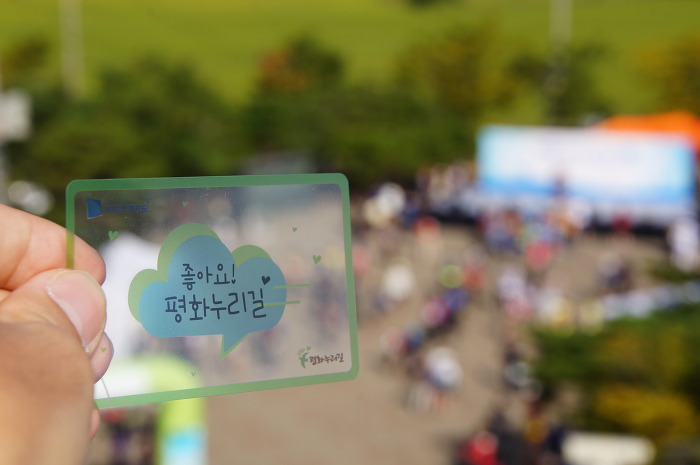
The journey was quite special and meaningful as it was restricted to a limited group of people for a limited period of time. On the other hand, it was sad that we could not freely walk on our own land. I hope that we can preserve and pass on the natural beauty of Pyeonghwa Nuri-gil to future generations so that all the people can enjoy walking along the road. I recommend that you apply through the website and participate in the Pyeonghwa Nuri-gil Walking Festival.
http://ggholic.tistory.com/9167












